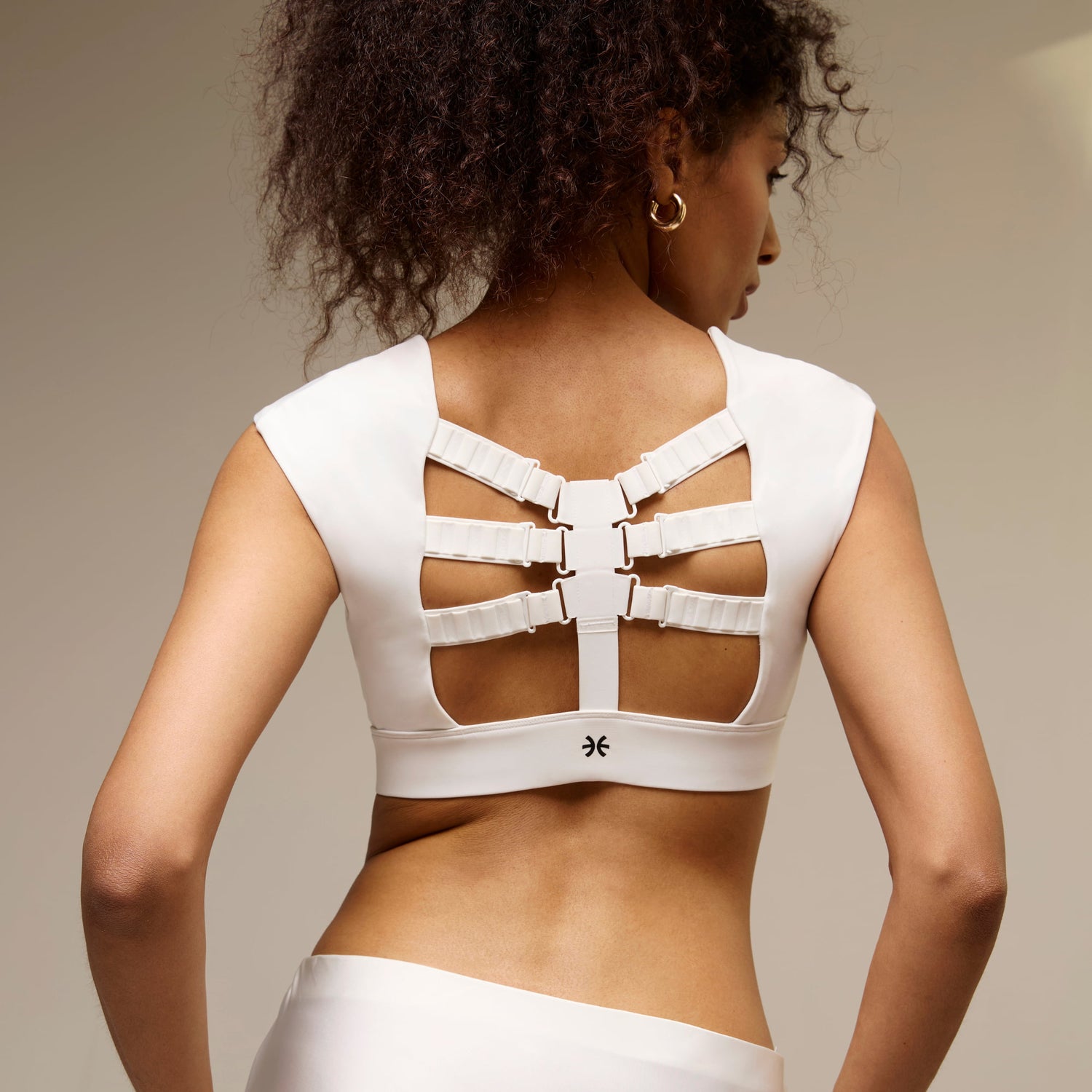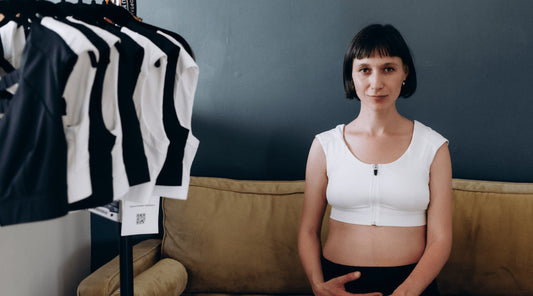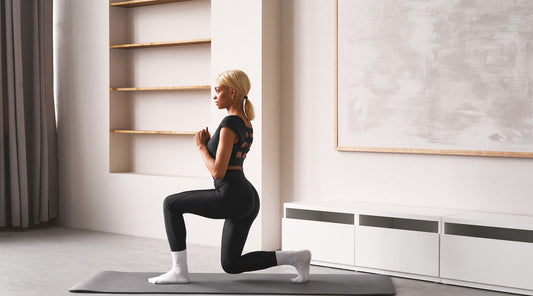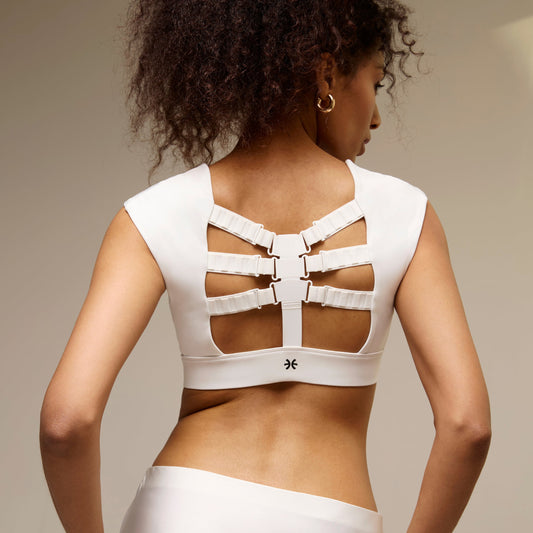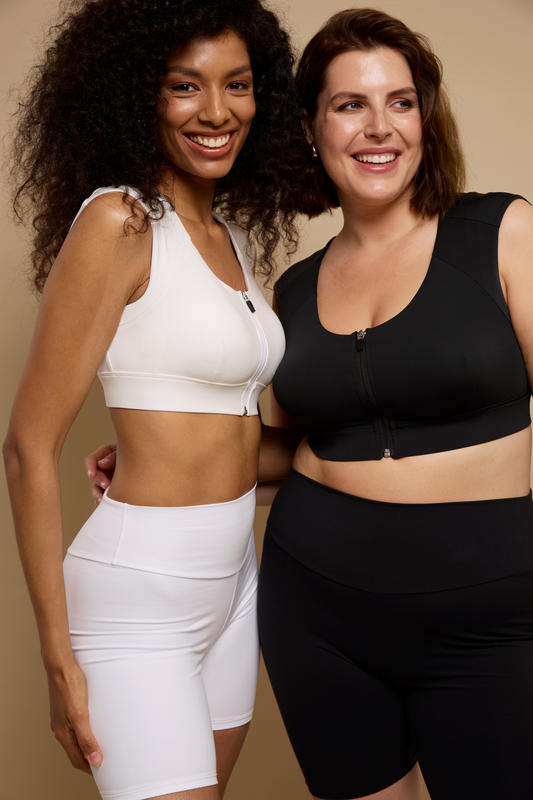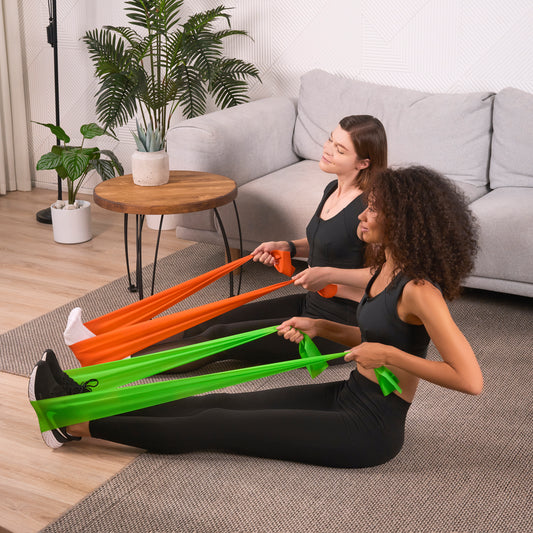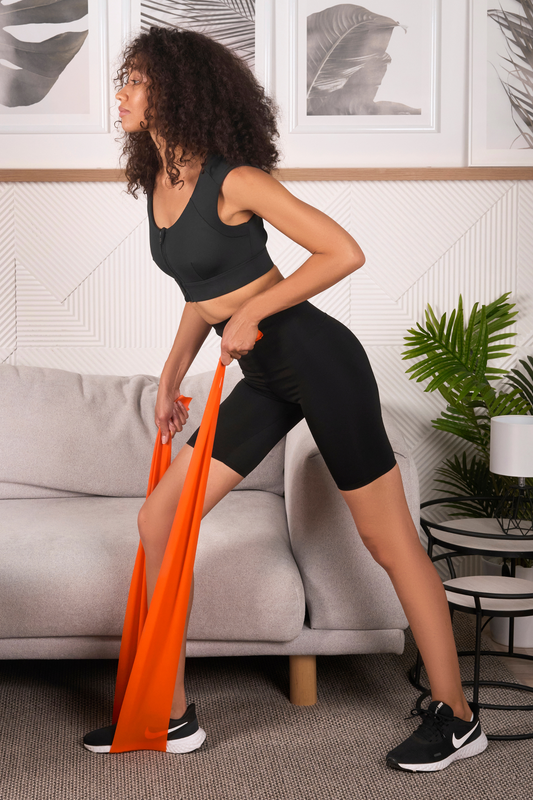Working from home certainly has its perks (hello, comfy pants), but it can also be a real mental and physical challenge. The distractions often multiply and the temptation to work from the couch is sometimes too hard to resist.
Here’s your sign to take a desk break and do a quick scan of your body. Feeling sore, tight, a little fatigued? A posture check and some easy stretches can go a long way in keeping you comfortable and productive.
Below are some tips for how to improve your posture at your desk as well as 10 beneficial posture exercises that can be done right at your workstation.
Why Stretching Is Important for Desk Workers
The increase in remote work has (unsurprisingly) given rise to more musculoskeletal discomfort and pain. One recent study found that those who worked from a sofa or a chair without a backrest were at a higher risk for discomfort. Also, those using a laptop versus a desktop monitor were 2 to 3 times more likely to suffer from neck and back discomfort (1).
Other studies have shown that up to 61% of remote workers experience aggravated musculoskeletal pain, sometimes of severe intensity. Compared to office workers, those working from home have an increased risk of pain throughout the body and more severity of that pain (2).
We can chalk up the majority of this pain and discomfort to something that can be prevented and — thankfully — corrected: poor posture. Whether you’re WFH or have a dedicated office, the best way to keep yourself alert and feeling good throughout the day is to schedule in multiple breaks to allow yourself to move, stretch, and re-focus. Wearing a posture bra like Etalon is also a good way to help you maintain good posture, especially during long workdays.
The following 10 posture exercises at your desk only require a few minutes — time that you can easily win back with the boost of productivity you’ll get.
10 Stretching Exercises for Desk Workers
Try to do a few (or all, if you can!) of these desk posture exercises every hour. Set an alarm to remind you when to get up, take a breather, and get in a nice, quick stretch. Each of these stretches can be done either seated or standing.
1. Triceps Extension Stretch
Why? The triceps, which help extend the elbow, sit in the back of the upper arm. Since this part of the body barely moves when you’re in front of a computer, the triceps tend to get tight. A good stretch can help relieve tension and increase range of motion.
How? You can either stand or remain seated. Lift your right arm up and bend at the elbow as if you were patting yourself on the back. Use your left hand to gently press down on the right elbow, pulling it slightly toward your left side. Hold for about 10 seconds and release. Repeat on the left arm.

Source: Healthline
2. Shoulders & Pecs Stretch
Why? Poor posture often involves rounded shoulders (think: tech neck). If you’re sitting at a desk for long periods of time, you may find that you are hunching over your computer or tensing up in the shoulders. Try to remember to drop your shoulders down and draw your shoulder blades together — an action that can be helped with the right posture bra. A quick stretch will also help prevent tight shoulders.
How? This easy stretch will hit your shoulders and pecs (in the chest area). You can stand or stay seated (you may have to sit sideways on your chair if there’s a full backrest). Clasp your hands behind your back. If this is too much of a stretch, hold a towel or shirt in both hands behind you. Push your hands away from your body as you push the chest outward and raise the chin slightly. Hold this pose for up to 30 seconds.

Source: Healthline
3. Seated Torso Twist
Why? The torso makes up the core of the body, the main area in control of your posture. A simple seated twist helps stretch and engage the spine, enhancing flexibility and reducing tension.
How? From your chair, make sure your feet are flat on the floor. Sit up tall and grab the back of the chair with your left arm. Keep your bottom firmly on the chair as you bring your right arm across your body. Grab on to your left thigh or the left side of your seat. Engage your core and push into your thigh or the chair to help you get into a deeper twist. Let out a big, long exhale. Hold the pose for up to 30 seconds. Slowly come back to a neutral position and repeat on the other side.

4. Upper Body Stretch
Why? Putting your arms above your head can give you a nice, big stretch in the arms, shoulders, and upper back, and also give you a little jolt of energy.
How? Clasp your hands together and lift your hands above your head with palms facing upward. Push your arms up as high as you can, bringing your shoulders up to your ears. Hold for up to 30 seconds. You can also push your hands behind you to stretch your chest.

Source: Healthline
5. Neck Rolling Exercises
Why? Your neck is one of the most vulnerable parts of your body. You can help protect it and maintain good posture by making sure that your screen is set at eye level. Avoid having to look down or up and keep your neck at a neutral position. To help relieve stiffness in the neck and relax the shoulders, do a few rounds of slow neck rolls from the right ear to the left ear.
How? Sit up in your chair, rest your hands on your thighs, and relax your shoulders. Tilt your right ear down toward your right shoulder. Hold for about 10 seconds. Slowly roll your neck down to where your chin meets your chest and hold again. Then roll to the left ear and hold. Roll toward the front again and repeat. Avoid rolling your head behind you.

Source: Healthline
6. Side Lat Stretch
Why? The lats (short for latissimus dorsi) are the largest muscles in the upper body. These muscles often get tight after long bouts of sitting, making it harder to maintain good posture. Over time, tight lats can lead to chronic shoulder and back pain. Give these muscles some relief with a few side stretches.
How? Grab hold of the left side of the seat of your chair as you raise your right arm up. Reach the right arm over your head as you stretch toward the left side. Hold the pose for up to 30 seconds. Repeat on the opposite side.

Source: Healthline
7. Upper Trapezius Stretch
Why? Working alongside the lats, the traps (short for trapezius) help extend your neck and stabilize and move the shoulder blades. This is where you can build up stress (which can contribute to tension headaches) and feel the pain of poor posture.
How? Like the neck rolls, start at a neutral position, then bring your right ear down to your right shoulder. Lightly press down on your head with your right hand while pressing down on your left shoulder with your left hand. Don’t push too hard — this should be a gentle, relaxing stretch. Hold for up to 15 seconds and repeat on the opposite side.

Source: Healthline
8. Seated Hip Flexor Stretch
Why? Sitting for long periods is just as hard on your lower body. A seated position can lead to tight hip flexors — the muscles at the top of your thighs. Tight hip flexors can cause hip and back pain and will affect your posture. This often results in an anterior tilt (forward rotation) of the pelvis and a shortening in the area of the lumbar spine (lower back).
How? There are many ways to stretch the hip flexors, but this variation allows you to stay seated at your desk. Just scoot your bottom to the right edge of your chair. Keep the left foot on the floor as you slide your right foot back, lowering your knee toward the floor at a 90-degree angle. Your right knee should be in line with your right hip. Tighten your glutes and feel the stretch in the right hip flexor. Hold for up to 30 seconds. Repeat on the left side.
9. Hamstrings Stretch
Why? Like the hip flexors, the hamstrings — a trio of muscles at the back of your thigh — can tighten up from excessive sitting. Tight hamstrings can limit your range of motion and negatively impact your posture (4).
How? Seated at your chair, extend your right leg forward. Flex your right foot, bend forward from your waist, and reach for your toes. You can either keep your back flat or round forward, bringing your forehead to your knee. Hold the pose for up to 30 seconds. Repeat with the left leg. You can also do this with a second chair placed in front of you. When you extend your leg outward, place your foot on the seat of the second chair. Bend forward and hold.

Source: Healthline
10. Forward Fold Stretch
Why? A forward fold stretch may be one of the most satisfying exercises after long bouts of both sitting and standing. This full-body stretch helps relieve tension in the hips, hamstrings, and entire spine. Bringing your head below your heart can also stimulate your digestion and calm your nervous system.
How? Inhale as you sit up tall in your chair with your arms relaxed at your sides. Take a big exhale and hinge forward at the hips, lowering your hands to your thighs, shins, or the floor. Let your chest sink down as you relax your neck. Hold for five deep breaths, then slowly roll back up to the top. You can also do this standing up, holding onto your elbows and keeping a slight bend in your knees.

Source: Today Media
How To Improve Posture at Your Desk
These stretching exercises for desk workers will offer some much-needed relief and will make maintaining good posture easier. You can also improve your posture at your desk with:
- An ergonomic workstation that allows you to keep your feet flat on the floor, your computer monitor at eye level, and your shoulders relaxed. See here for tips on how to sit at a desk with good posture.
- A posture bra for women that helps you pull your shoulder blades together, open your chest, build muscle memory in the shoulders and upper back, and prevent you from slouching.
While you’re working, don’t forget to allow yourself breaks. Ideally, try to take one break per hour, even if it’s just a few minutes to hydrate, rest your eyes, and enjoy a few of the stretching exercises above.
SOURCES:
- International Journal of Environmental Research and Public Health. “Prediction of Work from Home and Musculoskeletal Discomfort: An Investigation of Ergonomic Factors in Work Arrangements and Home Workstation Setups Using the COVID-19 Experience.” (2023). https://www.ncbi.nlm.nih.gov/pmc/articles/PMC9967171/
- Frontiers in Public Health. Telework-related risk factors for musculoskeletal disorders. (2023). https://www.ncbi.nlm.nih.gov/pmc/articles/PMC10350503/
- Cureus. Correlation Between Foot Posture and Hamstring Muscle Tightness. (2023). https://www.ncbi.nlm.nih.gov/pmc/articles/PMC10434718/
FAQs
How can I improve my posture at my desk?
What are the best desk stretches?
How often should I do stretching exercises while sitting at a desk?
Can desk stretches help alleviate back pain from long hours of sitting?
Trending
Try Etalon posture improvement products
